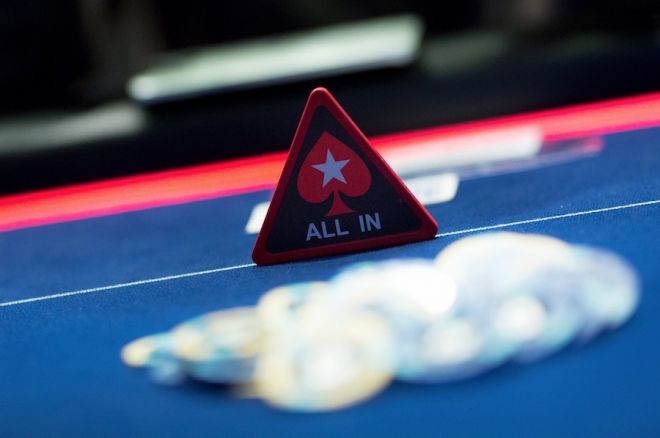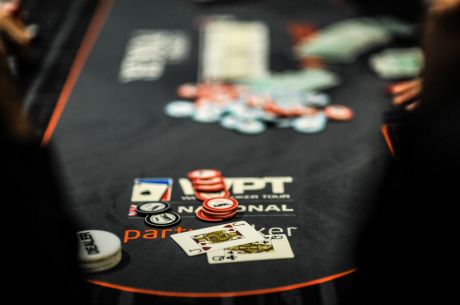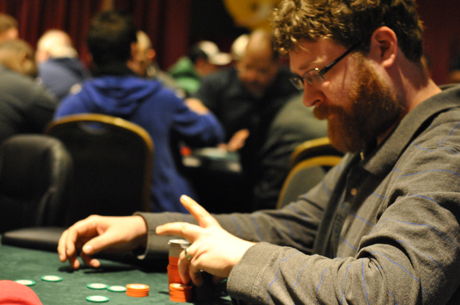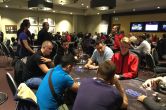Playing Against Short Stacks Late in a Tournament: Call or Fold to a Shove?

Covering live poker tournaments for a living affords me the opportunity to see countless thousands of hands played out, many of which offer interesting and potentially valuable insights into how players — both amateurs and professionals — play the game. In this ongoing series, I’ll highlight hands I’ve seen at the tournaments I’ve covered and see if we can glean anything useful from them.
The Scene
It's back to the Mid-States Poker Tour for this week's hand, and we've traveled westbound to the snowy mountains of Colorado — yes, three feet of snow got dumped on us in mid-April — for the $1,100 buy-in MSPT Golden Gates Main Event.
Day 2 was upon us and the money bubble had recently broken, so there is just under 45 players remaining. The next payout will receive $2,129, and first will take down $102,199.
I had recently been moved to my current table and when we pick up the action I'm nursing a stack of about 80,000 at 4,000/8,000/1,000. The player in the hijack this hand had been moved even more recently, and I've yet to see him play a hand.
The Action
The table folded around to the player in the hijack, and he shoved all in for 73,000. The next three players folded, and I looked down at K♥J♥ in the big blind. I deliberated for a few minutes and then folded.
Concept and Analysis
With what kind of range do we want to be calling a shove of nine big blinds when we're in the big blind and the aggressor is in the hijack? That's the question in this hand.
First, we have to evaluate what kind of range we expect someone to be jamming in this spot. It helps greatly to have some sort of read on how often our opponent is putting his chips in, but I didn't have the luxury of that in this hand as I was playing totally ignorant of my opponent's style.
Basically, when I was thinking this over, I figured my opponent's most likely holding was AxXx. I ultimately decided I didn't want to call it off behind and instead wait for a spot where I had first-in equity.
But how are we doing against such a hand? By using PokerStove (an equity calculator) to plug in our opponent's possible holdings, we can see that if we assign him even a tight shoving range of any ace or any pair, K♥J♥ still has 42.6% equity in such a scenario.
Doing the math on the pot size, I was getting 1.4-to-1 on my money to call here. I only need to be getting 1.35-to-1 to make a break-even call with K♥J♥, and that's if we assign him a very tight shoving range.
In practice, I think most recreational players in smaller stakes tournaments like this probably don't shove widely enough, but most are probably still aware they should be getting in there with Broadway hands in late position at the very least.
If we add in Broadway combos to his range, suddenly the equity for K♥J♥ jumps to 46.8% and we have a no-brainer call.
It's good as well to factor in the structure of the tournament. This tournament had 40-minute levels, which is solid but it's not like I had an hour to wait around for a better spot. It's very possible a better spot wasn't going to present itself in the near future, and that should have pushed me even more towards being a little more willing to gamble.
As it happened, a better spot did present itself when that very same player shoved in with A♣8♣ and I woke up with K♥K♠, but he got there and busted me just one orbit later. Perhaps that could have been avoided altogether if I didn't make a fold that I think in hindsight was probably too tight.
Want to stay atop all the latest in the poker world? If so, make sure to get PokerNews updates on your social media outlets. Follow us on Twitter and find us on both Facebook and Google+!









